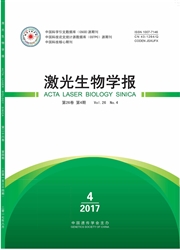

 中文摘要:
中文摘要:
借助活性氧发光分子探针,利用荧光光谱和激光共聚焦扫描显微技术,在不同年份的玉米种子吸胀早期,对其胚、淀粉和糊粉层细胞活性氧生成进行了定量和亚细胞定位分析。结果表明:胚细胞产生的活性氧最多,糊粉层细胞次之,淀粉细胞几乎不产生活性氧;而且胚细胞产生的活性氧主要定位在细胞内,细胞膜上小产生;糊粉层细胞产生的活性氧主要定位在细胞膜。这一种子吸涨早期活性氧生成机制的揭示,为化学发光检测种子活力提供了生理依据。
 英文摘要:
英文摘要:
With the assistance of molecular probes for reactive oxygen species (ROS) , the production and localization of ROS derived from embryo, starch and aleurone layer of maize seeds with different ages were investigated under a laser scanning confocal microscope and a lumineseenee spectrometer. Results demonstrated that the level of ROS was greater in embryo than in aleurone layer, and only very little ROS could be detected in starch. Furthermore, the ROS produced in embryo were mainly localized inside eells but not on cell membrane. By contrast, ROS from aleurone laver were acenmulated on cell membrane. Together, we preliminarily elucidated a mechanism of ROS production in early stage of seeds inhibition, providing the physiological basis for chemiluminescence deteetion of seeds vigor.
 同期刊论文项目
同期刊论文项目
 同项目期刊论文
同项目期刊论文
 期刊信息
期刊信息
